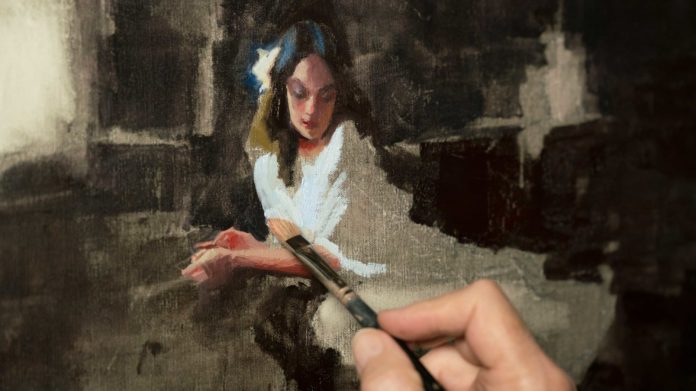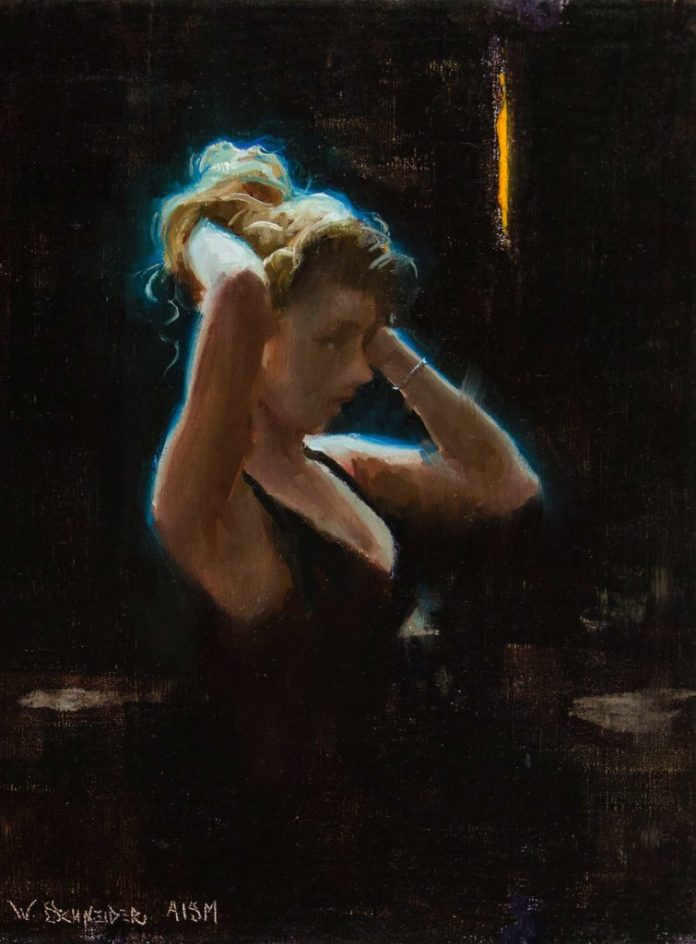Why do some artists get to a certain level and then stagnate, while others keep improving? Heed this advice on how to improve your art.

3 Ways to Achieve Excellence in Art
By William Schneider
Why do some artists get to a certain level and then stagnate, while others keep improving their entire lives? Some of the artists seem to make the same mistakes month after month . . . clearly “practice does not make perfect.” In fact, coaches have now amended that saying to “perfect practice makes perfect.”
On the other hand, some artists keep steadily climbing the ladder. One of my workshop students was eager, but not very accomplished. When she took another workshop from me the following year, her skill level had jumped a hundred percent! She continued to study and learn and is now winning national competitions and launching a professional career. (By the way, she is not a young prodigy; she started on this path when her kids were out of school.) This topic is of particular interest to me because I went back to art school when I was in my 40s and had to pursue it on a part-time basis until only 10 years ago.
Here are three actions I have found helpful to improve your art:
1. Research (and analyze). I look at art books and go to museums frequently to try to figure out why some pieces work better than others; I think of “reverse engineering” them. My wife and I took a trip to Montréal (in February . . . brrrr) to see an exhibition of J. W. Waterhouse. I would walk three blocks from our hotel to the Musée des Beaux-Arts and study the masterworks. I’d return to the hotel, eat lunch with my wife, and then both of us would return to the museum for more study and analysis. Then we’d leave to eat supper and she would go to the spa or watch TV while I went back to the museum. I filled my sketchbook with drawings and notes. Where did Waterhouse place his key figures? What was the pattern of lights and darks? What was the overall color harmony? Was there an explicit narrative? I tried to imagine what he painted first, what was second, and so on. After three days of this, the light bulbs began to come on and I started to understand the logic to his art composition.

2. Take a class. With the expanding number of schools and ateliers it’s easy to sign up for an evening or weekend class. Again, thanks to our new technology we can take online classes with instructors who are half a continent away. Most of today’s representational masters also teach workshops.
In my case I learned much of my pastel technique by taking workshops year after year from the great Harley Brown. Even though I now teach workshops myself, I still try to study with an artist I like at least once a year. You can also get instructional DVDs.
Hint: treat an art video workshop like a class. Stop the DVD after each section and practice the techniques shown at your own easel.
Related Article > Contemporary Art: Getting to the Next Level
3. Paint from life. This probably should have been number one. The camera lies to us! There are four key elements to a representational painting: shape (drawing), value, color temperature, and edge. In a photo, three of the four are ALWAYS wrong! Values are the worst offender. The two or three darkest values turn into black, and the lightest areas get “blown out” to pure white. In a photo all edges are equally sharp . . . but that’s not the way we see. (The center of our field of vision is sharp, but the periphery is in soft focus. As we glance around a scene we can see each edge sharply — sequentially, but not simultaneously).
Color temperature is also distorted. We are limited by the phosphors in our computer screens, or — worse yet — the dyes in our printer’s inks. The fourth element, shape, may or may not be distorted, depending on how close we were to the subject when we took the photo. If we work exclusively from photos we become really good . . . at painting inaccuracies! There are a couple of other benefits to working from life. It imposes a time limit that forces us to be selective. It also forces us to “Be Here, Now”; in other words, “mindful” in the Zen sense.
Schneider, who has demonstrated his painting techniques at the Figurative Art Convention & Expo, also has a variety of painting workshops available through Liliedahl Art Video. Preview them and learn more about the pastel painting workshops here.





